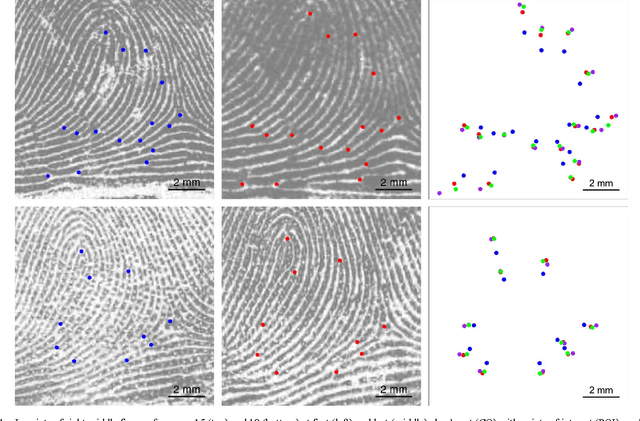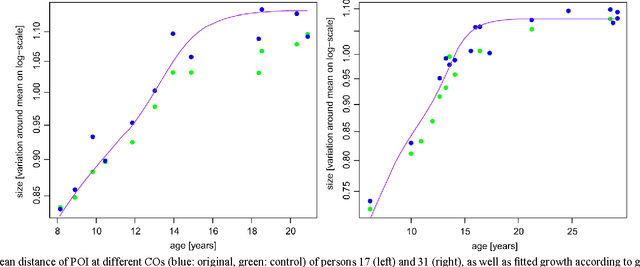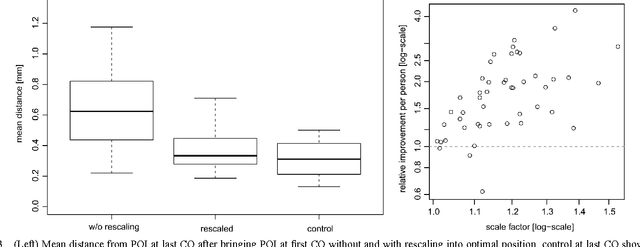Modeling the growth of fingerprints improves matching for adolescents
Paper and Code
Aug 06, 2010



We study the effect of growth on the fingerprints of adolescents, based on which we suggest a simple method to adjust for growth when trying to recover a juvenile's fingerprint in a database years later. Based on longitudinal data sets in juveniles' criminal records, we show that growth essentially leads to an isotropic rescaling, so that we can use the strong correlation between growth in stature and limbs to model the growth of fingerprints proportional to stature growth as documented in growth charts. The proposed rescaling leads to a 72% reduction of the distances between corresponding minutiae for the data set analyzed. These findings were corroborated by several verification tests. In an identification test on a database containing 3.25 million right index fingers at the Federal Criminal Police Office of Germany, the identification error rate of 20.8% was reduced to 2.1% by rescaling. The presented method is of striking simplicity and can easily be integrated into existing automated fingerprint identification systems.
 Add to Chrome
Add to Chrome Add to Firefox
Add to Firefox Add to Edge
Add to Edge